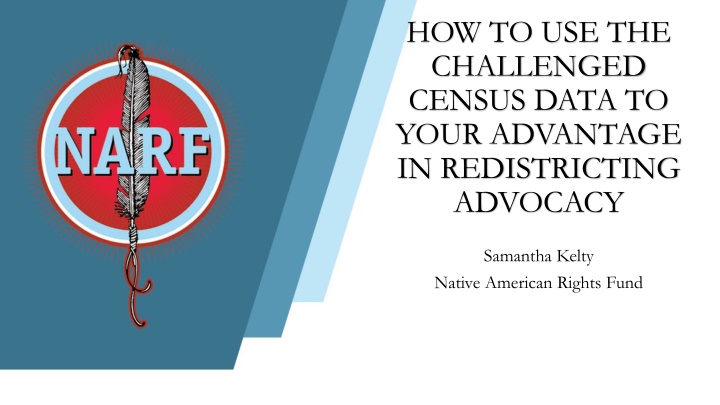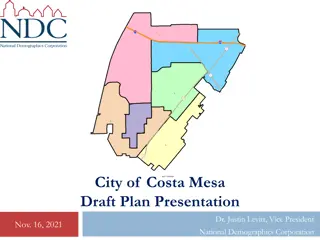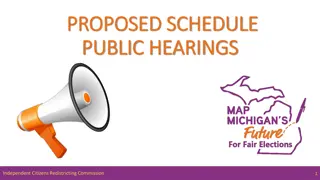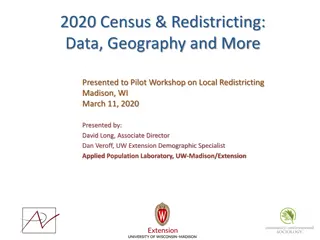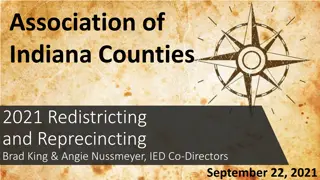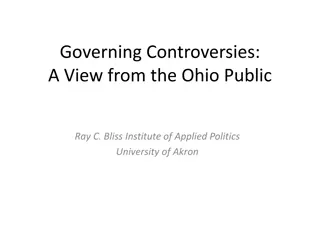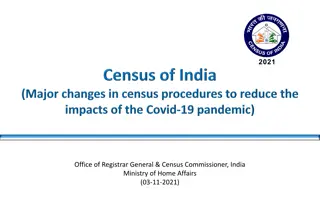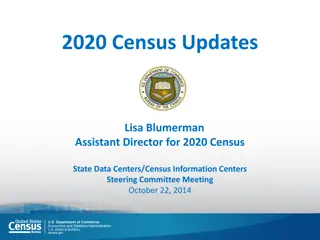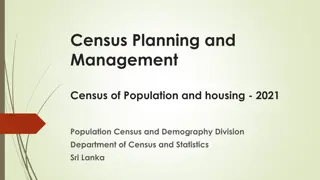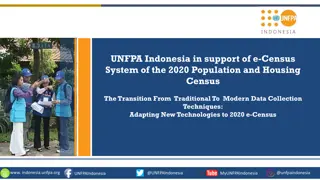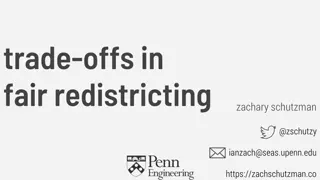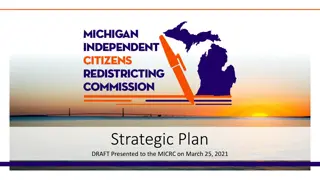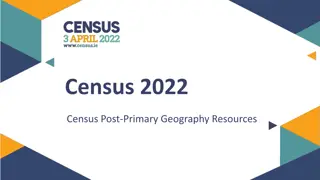Leveraging Census Data for Effective Redistricting Advocacy
Utilize challenged census data to strengthen your redistricting advocacy by considering alternative datasets, such as self-response rates and tribal enrollment figures. Understanding population disparities and deviation considerations is crucial for effective advocacy efforts. Presenting additional data may help create a more comprehensive record, but careful consideration is needed regarding its political impact.
Download Presentation

Please find below an Image/Link to download the presentation.
The content on the website is provided AS IS for your information and personal use only. It may not be sold, licensed, or shared on other websites without obtaining consent from the author.If you encounter any issues during the download, it is possible that the publisher has removed the file from their server.
You are allowed to download the files provided on this website for personal or commercial use, subject to the condition that they are used lawfully. All files are the property of their respective owners.
The content on the website is provided AS IS for your information and personal use only. It may not be sold, licensed, or shared on other websites without obtaining consent from the author.
E N D
Presentation Transcript
HOW TO USE THE CHALLENGED CENSUS DATA TO YOUR ADVANTAGE IN REDISTRICTING ADVOCACY Samantha Kelty Native American Rights Fund
DIRECT CHALLENGES TO THE CENSUS DATA ITSELF DO NOT BODE WELL AT THIS TIME Not enough data yet to comment on the quality of the data for redistricting. The Post-Enumeration Survey (PES) first results planned for release in first quarter of 2022. Legal challenges not likely to succeed now before we know the impact. Alabama v. United States Dep't of Com. (M.D. Ala. June 29, 2021) Legal challenges later will be tough. Wisconsin v. City of New York (1996)
CONSIDER OTHER DATA Data Set #1: Self- Response Rates Data Set #2: PES Data Set #3: ACS 21% AIAN/67% National Strongly correlated with undercounting Note rate for your Tribe and your State 2010 AIAN living on reservations undercounted by 4.9% Designed to assure reliable estimates for small geographic areas 2019 5-year estimate
CONSIDER OTHER DATA Data Set #5: Prison gerrymandering Data Set #4: Tribal enrollment Updated numbers due to ARP Act relief package Native Americans are 8.6% of South Dakota s population, but they are about 34% of South Dakota s imprisoned population. Native Americans are 6% of Montana s total population, but they are about 22% of Montana s imprisoned population.
Whether to present the data? Presenting additional data allows you to create a record. It may not be politically prudent. It may not help you.
Whether to present the data? Undercount = may be more Natives in your district than data shows. Ex: If your district has a prison, you may want those imprisoned people counted in your district. Consider the Native VAP of your proposed map.
DEVIATION CONSIDERATIONS State and local redistricting plans are presumed to comply with equal population requirements if they have a total deviation of 10%.
DEVIATION CONSIDERATIONS Population disparities (even above 10%) between districts can be OK to advance legitimate state policies. Ensuring VRA compliance and avoiding vote dilution are legitimate state policies.
Fair Districting in Indian Country #ShapeNativeFutures vote.narf.org/redistricting kelty@narf.org
